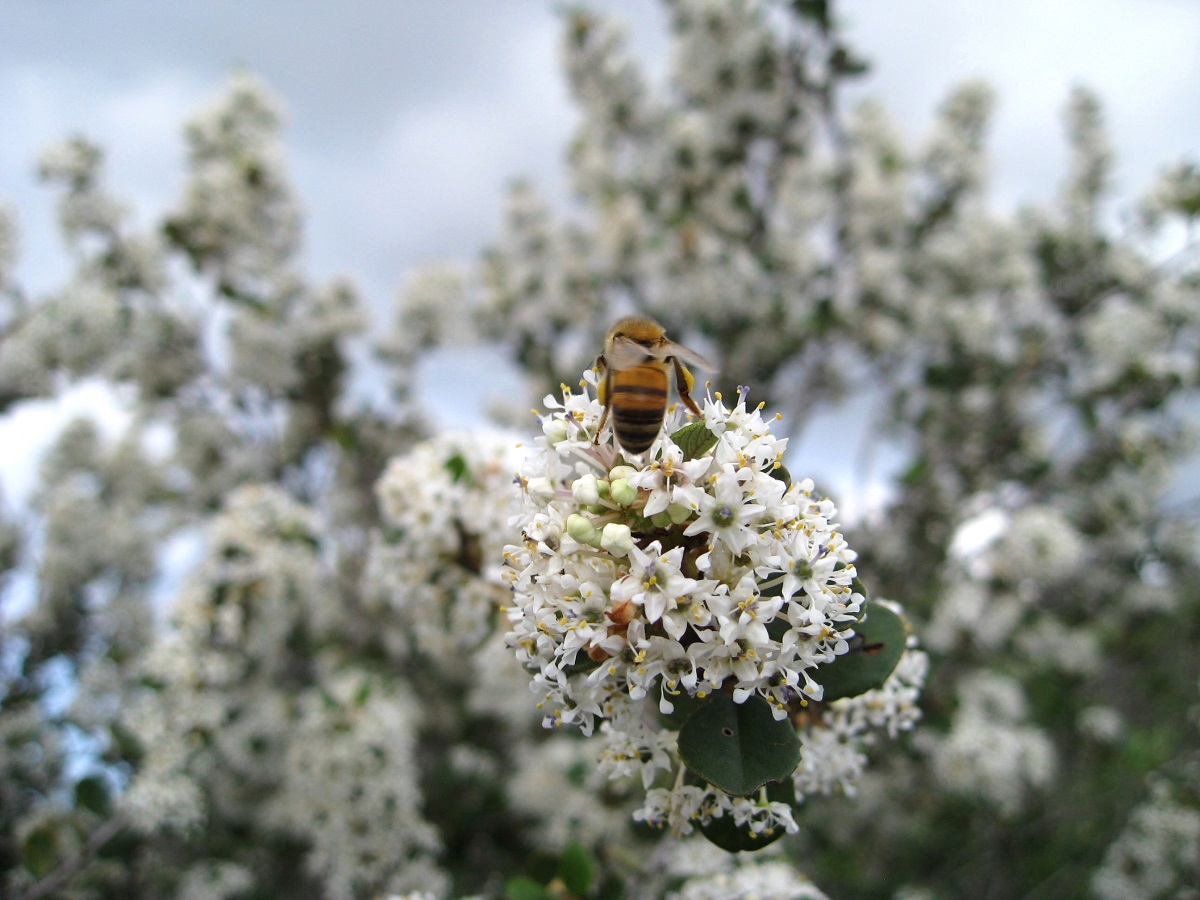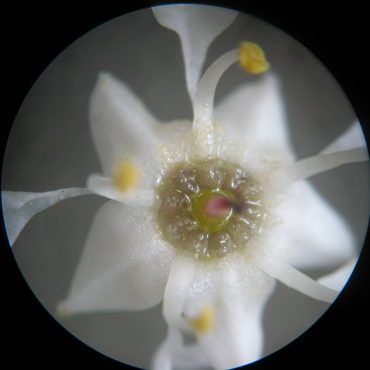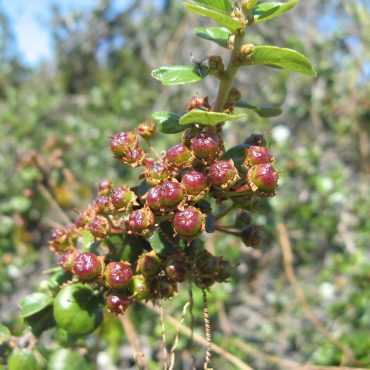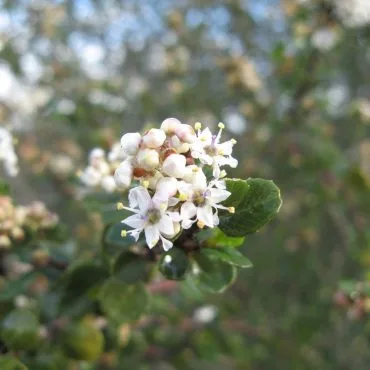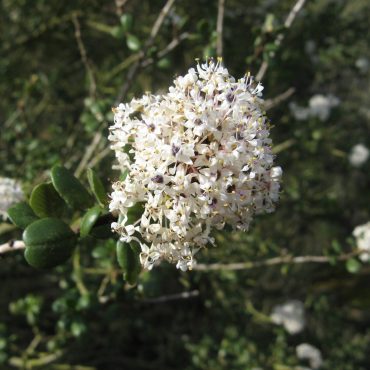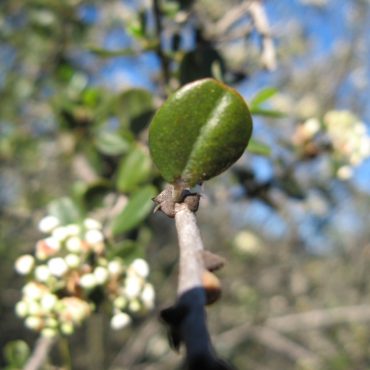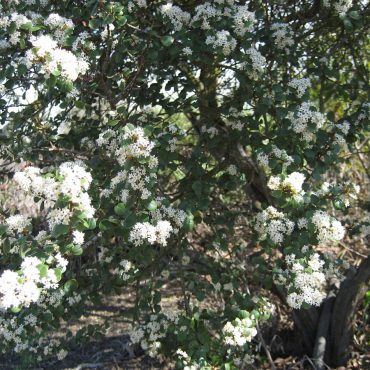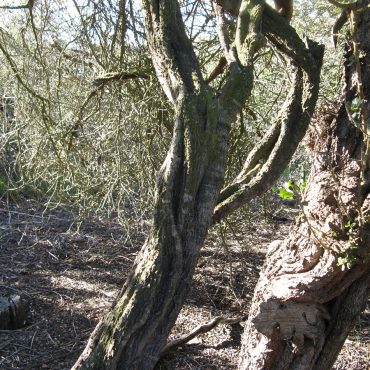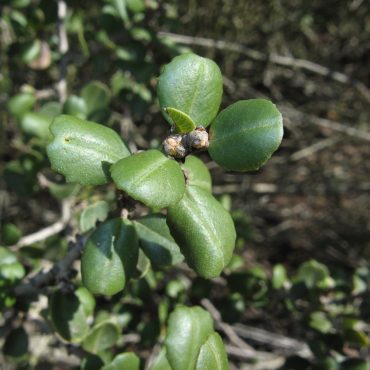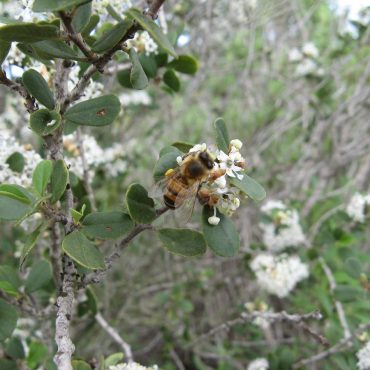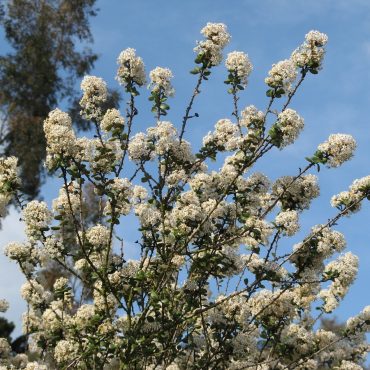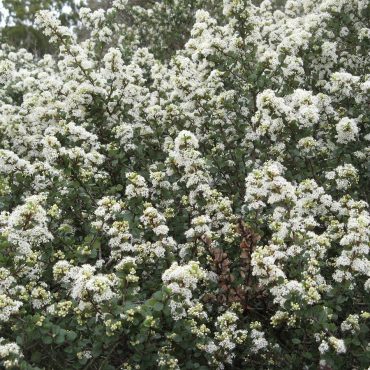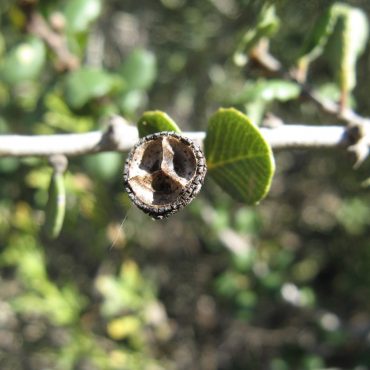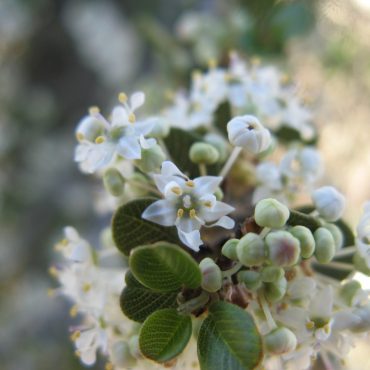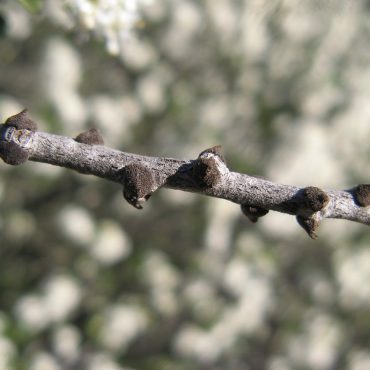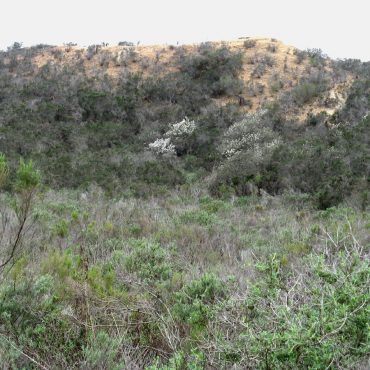Perhaps the best-known native shrubs in California are California lilacs (Ceanothus spp.), which cloak our spring-time hills in blue, lavender, and white. Wart-stemmed ceanothus (C. verrucosus) is the only species of California lilac in the Reserve. It is one of our earliest bloomers, and its white, fragrant blossoms attract various pollinators. When in full flower, shrubs buzz and hum with insects.
Historically, wart-stemmed ceanothus was widespread in the coastal chaparral of southern and Baja California, but modern populations have been greatly reduced by urban development. Because seeds are dependent on fire for germination, fire suppression has curtailed population recruitment. Wart-stemmed ceanothus is considered threatened by the California Native Plant Society and the Sierra Club.

